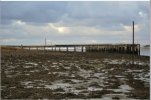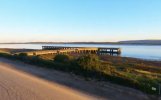A bit of a long shot really but I’m trying to find a bit of information out about this place.
The power station was situated between Barnstaple and Bideford and had a small internal rail system with a little shunter, photo here by Gordon Edgar:

 www.flickr.com
www.flickr.com
As far as I know the coal was bought in by sea but I’m not sure whether it had its own quay or whether it went to nearby Fremington Quay?
Also though did the small shunter pictured above run on BR metals when receiving a delivery?
Finally was there ever a delivery of coal directly by rail not involving marine transport at all?
Any thoughts would be much appreciated.
The power station was situated between Barnstaple and Bideford and had a small internal rail system with a little shunter, photo here by Gordon Edgar:

CEGB East Yelland Power Station, Bideford
Veteran standard gauge works shunter 'No.3' at C.E.G.B. East Yelland Power Station near Bideford on 31st May 1971, a 4-wheel diesel-mechanical Motor Rail 'Simplex' (Works No.3966). It had been rebuilt in 1939 from a First World War 60cm gauge 'Simplex' armoured loco and had previously worked at...
As far as I know the coal was bought in by sea but I’m not sure whether it had its own quay or whether it went to nearby Fremington Quay?
Also though did the small shunter pictured above run on BR metals when receiving a delivery?
Finally was there ever a delivery of coal directly by rail not involving marine transport at all?
Any thoughts would be much appreciated.



